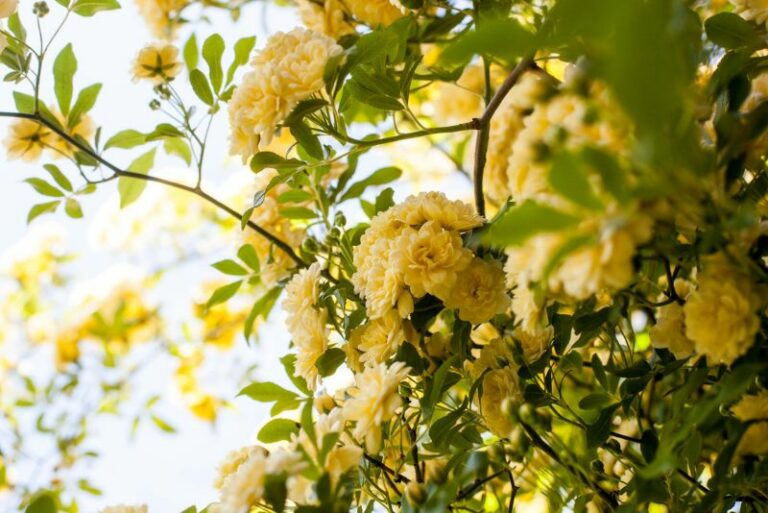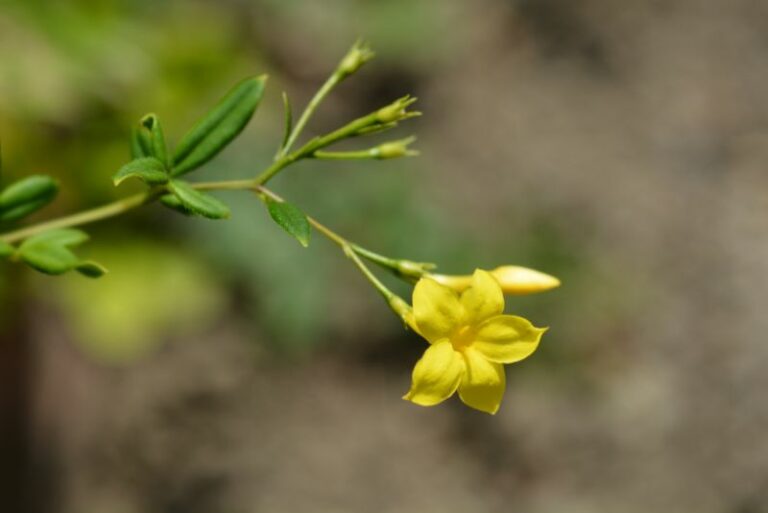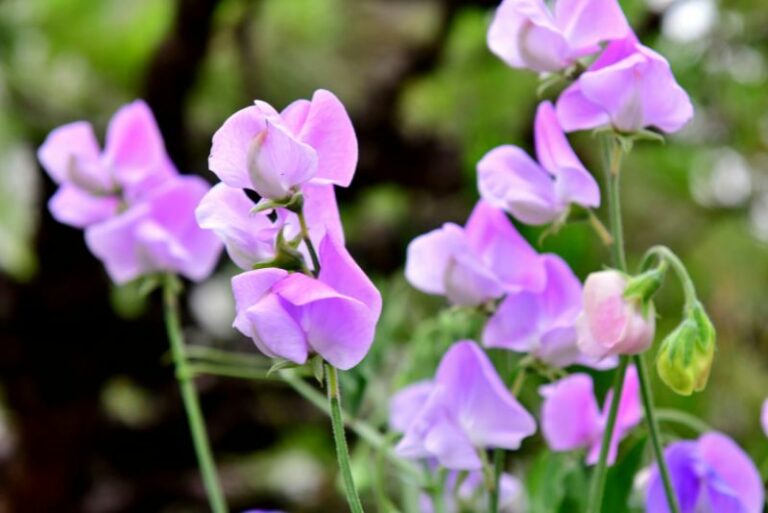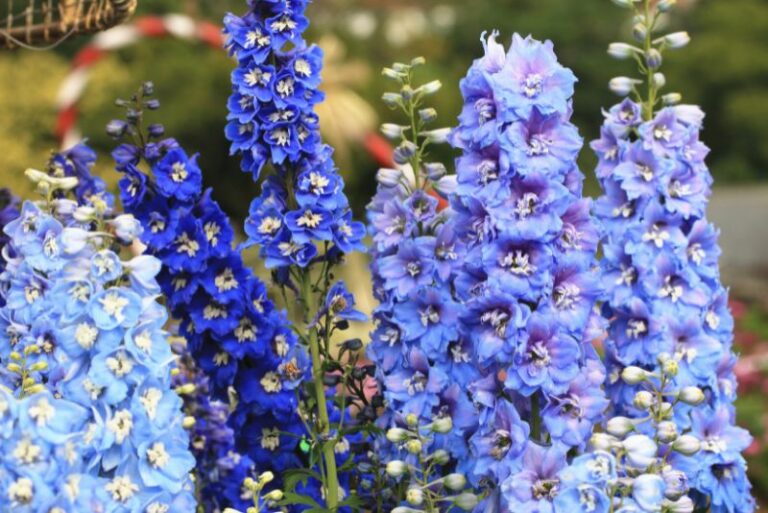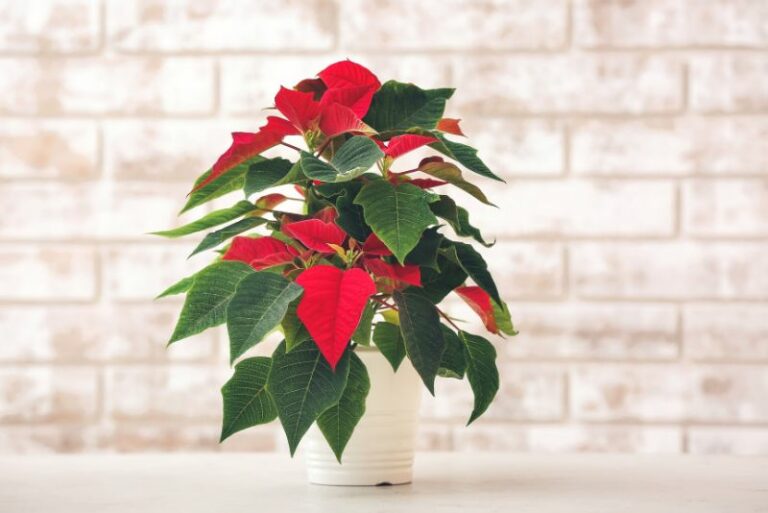Alyssum: Growing The Colorful Carpet Flower
Growing up, I always considered “alys-what?” one of those botanical mysteries best left unsolved. But after seeing the colorful carpet of alyssum blanketing a neighbor’s garden bed, my curiosity was piqued. What secret powers did this mysterious flower possess to transform an ordinary plot into a vibrant wonderland?
I knew I had to learn its ways and harness its magical carpeting abilities for my own yard. So I did what any self-respecting gardener would – I hit the books.
Or in this case, I surfed the web. And what I discovered about alyssum and how to grow its colorful carpet was quite enlightening indeed. Join me as I share what I’ve learned about cultivating this cheery groundcover and turning your garden into an explosion of colorful blooms.
Alyssum Overview
| Features | Description |
|---|---|
| Common Name(s) | Sweet Alyssum, Carpet Flower |
| Scientific Name | Lobularia maritima |
| Family | Brassicaceae |
| Height | 3-9 inches |
| Light | Full Sun to Partial Shade |
| Water | Moderate |
| Soil | Well-drained, can tolerate a variety of soil types including sandy, loamy and clay |
| Fertilizer | Light feeder. Use a balanced slow-release granular fertilizer at planting time or a liquid fertilizer every 4-6 weeks |
| Pests and Diseases | Generally pest-free, but can be affected by aphids, flea beetles, and downy mildew |
Please note that the information provided is general and may vary depending on specific cultivars and local conditions. Always check with a local extension service for the most accurate and current information.
All About Alyssum
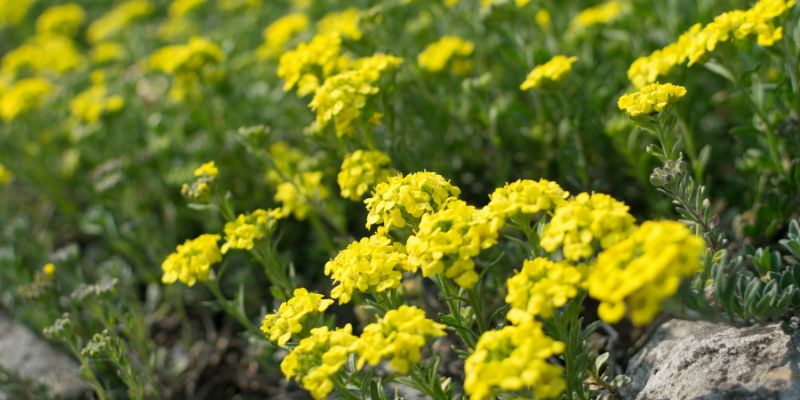
Alyssum, a genus of about 100–170 species of flowering plants in the family Brassicaceae, is native to Europe, Asia, and northern Africa, with the highest species diversity in the Mediterranean region. These cheerful little plants bloom prolifically, producing clusters of tiny white, pink, or purple flowers which are known for their sweet, honey-like fragrance.
Alyssum is a popular choice among gardeners due to its easy-going nature and its ability to grow in a variety of conditions. They are ideal for use in rock gardens, borders, or as ground covers due to their low-growing habit. They are also commonly used in hanging baskets or window boxes due to their cascading growth habit.
Alyssum plants prefer full sun to partial shade and well-drained soil. They are drought-tolerant once established, making them a good choice for xeriscaping or for areas where watering is difficult. Despite their delicate appearance, Alyssum plants are surprisingly hardy, and can tolerate light frost.
One interesting feature of Alyssum is its ability to attract beneficial insects. Its sweet scent and abundant nectar make it a magnet for pollinators such as bees and butterflies. Furthermore, it’s also known to attract certain predatory insects which help in pest control, making it an excellent companion plant in vegetable gardens.
In addition to its outdoor uses, Alyssum is also popular for indoor cultivation. Its compact size and continuous blooming make it an attractive option for indoor container gardens or as a houseplant. Plus, its sweet scent helps in creating a soothing indoor environment.
In terms of propagation, Alyssum can be easily grown from seeds directly sown in the ground or started indoors for transplanting later. They can also be propagated by cuttings. One of the best things about Alyssum is its long blooming period. With a bit of care, these plants can provide a continuous display of vibrant colors and delightful fragrance from early spring through to the first frost.
A Guide to Alyssum Varieties
Sweet Alyssum (Lobularia maritima)
Sweet Alyssum, also known as Lobularia maritima, is the most commonly grown variety. It originates from the Mediterranean region and was introduced to North America in the 17th century. This hardy annual produces a profusion of tiny, four-petaled flowers in clusters that range in color from white to pink to purple. Sweet Alyssum is renowned for its strong, sweet, honey-like fragrance. Like other Alyssum varieties, Sweet Alyssum is low-growing and forms a dense mat, making it an excellent ground cover.
Basket of Gold (Aurinia saxatilis)
Also known as Gold Dust, this perennial Alyssum variety hails from central and southern Europe. Known for its vibrant, golden-yellow flowers, Basket of Gold is a staple in rock gardens and borders. Although it lacks the sweet scent of Sweet Alyssum, it shares the same hardiness and drought resistance. It’s also taller, reaching up to 12 inches in height.
Alyssum montanum (Mountain Gold)
Alyssum montanum, or Mountain Gold, is a favorite in rock gardens for its ability to survive in the poorest of soils. It’s native to the mountainous regions of southern Europe, hence the name. It’s similar in appearance to Basket of Gold but has paler yellow flowers and only grows up to 10 inches tall. The flowers have a delicate, light scent.
Rosie O’Day (Alyssum ‘Rosie O’Day’)
The Rosie O’Day variety is a more recent cultivar, boasting vibrant, pink flowers. It’s a compact, mound-forming plant that only grows up to 6 inches tall. It has the same sweet scent as Sweet Alyssum. Although it shares the same low-water needs as other Alyssum varieties, it prefers a bit more shade.
Each Alyssum variety has its own unique beauty, but they all share certain similarities. All Alyssum species have a compact, low-growing habit, making them ideal for ground cover, rock gardens, and containers. They are also all very hardy and drought-tolerant, and with the exception of Basket of Gold, they all have a sweet, honey-like scent. These charming and versatile plants, with their cascade of tiny flowers and pleasant fragrance, are a delightful addition to any garden.
Alyssum Care Procedures
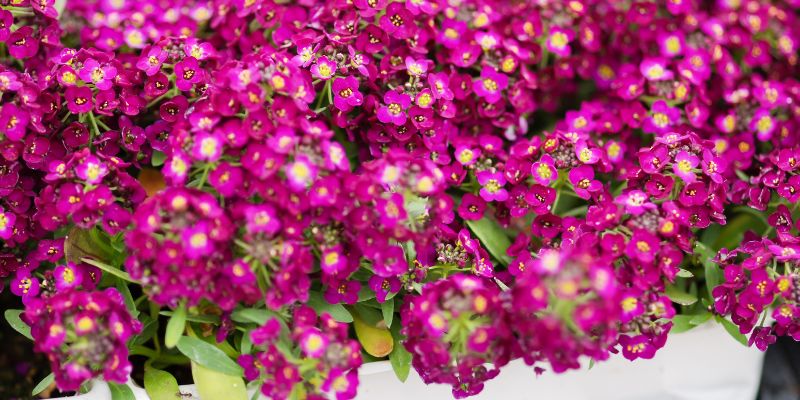
Beginner gardeners will find Alyssum to be an easy and forgiving plant to care for. Here are some basic tips for keeping your Alyssum plants healthy and blooming:
Light and Temperature Requirements
Alyssum plants are sun-loving and thrive best when placed in full sun positions. They can tolerate partial shade, but this may result in decreased flower production. For the most vibrant and abundant bloom, place your Alyssum plants in a location where they will receive at least six hours of direct sunlight each day.
As for temperature, Alyssum is quite tolerant and capable of withstanding a range of conditions. These plants are hardy to USDA plant hardiness zones 4 through 9, meaning they can withstand minimum temperatures down to -30 degrees Fahrenheit (-34 degrees Celsius). However, they perform optimally in milder climates with temperatures between 60 degrees Fahrenheit (15 degrees Celsius) and 75 degrees Fahrenheit (24 degrees Celsius). It’s worth noting that most Alyssum species can endure light frost and cold snaps, but prolonged periods of freezing temperatures may harm the plants.
In summary, to provide the best care possible for your Alyssum plants in terms of light and temperature, ensure they are exposed to plenty of sunlight, and maintain a relatively mild ambient temperature. If your area is prone to harsh winters, consider growing Alyssum as an annual or provide some form of winter protection to your perennial Alyssum varieties.
Water and Humidity Requirements
Alyssum plants are renowned for their drought tolerance. Once established, they can thrive with minimal watering, making them ideal for drier climates or for gardeners keen to conserve water. However, it’s essential to not let the soil dry out completely. Alyssum prefers evenly moist soil, especially during the hot summer months. Overwatering should be avoided as soggy conditions can lead to root rot or other fungal diseases. As a rule of thumb, water your Alyssum plants once the top inch of soil feels dry to the touch.
Irrigation method also matters. Watering directly at the base of the plant, rather than overhead watering, will help prevent foliage diseases. Soaker hoses or drip irrigation systems are effective methods to ensure water reaches directly to the roots.
Regarding humidity, Alyssum is fairly adaptable. It can handle a wide range of humidity conditions, from dry climates to relatively humid ones. However, in overly humid conditions, it’s advisable to space the plants adequately to ensure proper air circulation and reduce the risk of fungal diseases.
In summary, while Alyssum is a low-water, drought-tolerant plant, it does best with consistent moisture in well-drained soil. Avoid overwatering and ensure good air circulation when planting in areas with high humidity. With the right balance of watering practices, your Alyssum plants will flourish and provide a stunning visual display.
Soil Type and Preparation for Alyssum
When it comes to soil choice, Alyssum is not picky and can grow in a wide range of soil types. However, there are certain characteristics that can enhance plant health and blooming. Here is a comprehensive guide on the preferred soil types for Alyssum and how to prepare them:
1. Sandy or Loamy Soil
Alyssum prefers well-draining soil, making sandy or loamy soils an excellent choice. These soil types are well-aerated and prevent waterlogging, a condition that can lead to root rot. If your garden has heavy clay soil, consider amending it with organic matter or sand to improve drainage.
2. Soil pH
The optimal pH range for Alyssum is between 6.0 and 7.0, which is slightly acidic to neutral. If you are unsure of your soil’s pH, you can test it using a soil pH tester available at garden stores. Should your soil be too acidic (below 6.0), you can raise the pH by adding lime. If it’s too alkaline (above 7.0), you can lower the pH by adding sulfur or organic matter like compost or peat moss.
3. Soil Preparation
Before planting, prepare the soil by removing any weeds or grass and loosening it with a garden fork or tiller. This promotes better root penetration. Mix in ample organic matter (like compost or well-rotted manure) to enrich the soil, improve its texture, and enhance water retention.
In summary, while Alyssum is quite adaptable and can tolerate a range of soil conditions, it will thrive best in well-draining sandy or loamy soil with a pH range of 6.0 to 7.0. Proper soil preparation, incorporating organic matter, and ensuring optimal pH will help your Alyssum plants grow healthily and produce a profusion of flowers.
Fertilizer Requirements for Alyssum
Alyssum plants are not heavy feeders, and can do well even with minimal fertilization. However, to encourage optimal growth and consistent, vibrant blooming, it’s beneficial to provide them with supplemental nutrients. Here’s a detailed guide on fertilizing your Alyssum plants:
1. Type of Fertilizer
A balanced, granular, slow-release fertilizer is generally recommended for Alyssum. One with an N-P-K ratio of 10-10-10 (nitrogen-phosphorus-potassium) is suitable. Nitrogen promotes leaf growth, phosphorus helps with flower production, and potassium boosts overall plant health.
2. Frequency of Fertilization
Fertilizing should be done at the beginning of the growing season, typically in early spring, just as the new growth starts to appear. Alyssum plants can benefit from an additional feed in mid-summer to support continuous flowering. However, avoid over-fertilizing as it can lead to lush foliage at the expense of blooms.
3. Application of Fertilizer
When applying fertilizer, ensure to evenly distribute it around the base of the plant, avoiding the leaves and flowers. Following the application, water thoroughly to help the nutrients penetrate into the root zone and avoid any potential damage to the plant caused by concentrated fertilizer.
Remember, while fertilizer can help your Alyssum plants thrive, it’s not a substitute for good growing conditions. Proper light, temperature, water, and soil conditions are just as crucial for the health and blooming of your Alyssum. Always consider the overall growing environment and adjust your care practices accordingly.
Alyssum Care Procedures for Repotting
Alyssum is a versatile plant that can be grown in both gardens and pots. Repotting can help to maintain the health and vigor of your potted Alyssum plants, allowing them to thrive and bloom abundantly. Here is a comprehensive step-by-step guide on how to repot Alyssum:
1. Choose the Right Time
The best time to repot Alyssum is in the early spring, just before the plant begins its new growth cycle. This allows the plant to quickly recover from any transplant shock and begin growing in its new pot.
2. Select the Right Pot
Choose a pot that is one size larger than the current pot. Ensure that it has adequate drainage holes to prevent waterlogging and root rot. If you’re using a clay pot, soak it in water for a few hours before repotting to prevent it from absorbing moisture from the soil.
3. Prepare the Pot
Fill the new pot with a layer of fresh, well-draining potting mix. You can also add some slow-release fertilizer at this stage to provide the plant with essential nutrients.
4. Remove the Alyssum Plant
Carefully remove the Alyssum plant from its current pot. You can do this by gently tipping the pot and easing the plant out, taking care not to damage the roots. If the plant is root-bound (i.e., the roots are densely tangled and wrapping around the inside of the pot), gently tease the roots apart with your fingers.
5. Place the Plant in the New Pot
Place the Alyssum plant in the center of the new pot. Make sure that the top of the root ball is level with the rim of the pot. Fill in around the root ball with more potting mix, pressing down lightly to remove any air pockets.
6. Water the Plant
After repotting, water the plant thoroughly. This helps to settle the soil around the roots and reduces transplant shock. Place the pot in a warm, well-lit location, but avoid direct sunlight for a few days to allow the plant to adjust to its new environment.
In summary, careful and timely repotting can help your Alyssum plants stay healthy and vibrant. Always ensure to use a fresh, well-draining potting mix, choose an adequately sized pot, and water the plant thoroughly after repotting. With the right care, your Alyssum will continue to flourish and provide a stunning display of flowers.
Alyssum Propagation
Propagation is an effective way to multiply your Alyssum plants, either by division, cuttings, or seeds. This can enhance your garden’s color and vibrancy without additional purchases. Below is a detailed guide on how to propagate Alyssum:
1. Propagation by Division
As previously mentioned in the repotting section, division is a straightforward method to propagate Alyssum. Divide mature, well-established plants in early spring or autumn, carefully separating the root system into two or more sections. Each new plant should have a healthy portion of both roots and foliage. Replant the divisions immediately in well-prepared soil.
2. Propagation from Cuttings
You can also propagate Alyssum from cuttings. Choose a healthy, vigorous parent plant and cut a 3-4 inch stem section, preferably one without flowers. Remove the lower leaves and dip the cut end into a rooting hormone powder. Then, place the cutting into a pot filled with a moist, well-draining potting mix. Keep the pot in a warm, well-lit location, but out of direct sunlight. The cutting should root within 2-3 weeks.
3. Propagation from Seeds
Alyssum can be grown from seeds, offering an economical way to produce a large number of plants. Sow seeds indoors 6-8 weeks before the last expected frost or directly outdoors after all risk of frost has passed. Scatter the seeds over the surface of the soil and lightly cover them with additional soil. Keep the soil slightly moist and you should see sprouts within 7-14 days.
Remember, no matter which propagation method you choose, always provide the new plants with the same optimal growing conditions as the parent plant. This includes sufficient light, a well-draining soil, and adequate water and nutrients. With the right care, your propagated Alyssum plants will grow vigorously and bloom profusely, enhancing your garden with their vibrant colors and delicate fragrance.
Alyssum Care Procedures for Pruning
Pruning is an important aspect of maintaining the health and appearance of your Alyssum plants. It encourages healthier growth, keeps the plants compact and neat, and can enhance their flowering performance. Here is a comprehensive guide on how to prune Alyssum:
1. Choose the Right Time
The best time to prune Alyssum is in the summer, after the first flush of blooms has faded. This is typically referred to as “deadheading”, which encourages the plant to produce more flowers.
2. Use the Right Tools
Ensure that you have clean, sharp pruning shears or scissors for the task. This will ensure clean cuts and minimize the risk of transmitting diseases between plants.
3. Identify Spent Blooms
Look for flower clusters that are no longer vibrant and are beginning to wilt. These are the parts that you will want to remove.
4. Make the Cut
Cut off the spent blooms along with part of the stem. Aim to trim back about one-third of the plant’s height. Make the cut just above a leaf node or a new flower bud. This encourages the plant to produce new growth from that point.
5. Clean Up
After pruning, clean up any fallen leaves or spent blooms from the soil surface. This helps to minimize the risk of disease and pest infestation.
6. Monitor the Plant
After pruning, keep an eye on your Alyssum plants. They should start producing new growth and flowers within a couple of weeks. If you don’t see new growth, consider whether the plant needs more water, sunlight, or maybe a dose of slow-release fertilizer.
Remember, while pruning is beneficial for the Alyssum plant, excessive pruning can stress the plant. Hence, it’s important to strike a balance. With the right care and attention, your Alyssum plants will continue to thrive, providing lovely blooms throughout the flowering season.
Alyssum Troubleshooting
Keeping your Alyssum garden healthy and vibrant involves being aware of possible issues that could arise. The following are common problems, pests, and diseases that could affect your Alyssum plants and ways to cope with them.
Growing Problems
Alyssum plants usually have few growing problems if provided with adequate sunlight, water, and well-drained soil. However, overwatering can cause root rot, and excess shade can lead to leggy growth and fewer blooms. If your Alyssum plants are yellowing or wilting despite adequate watering, consider testing the soil. The plants prefer slightly alkaline conditions, and overly acidic soil can lead to nutrient deficiencies.
Pests
Alyssum plants could attract a variety of pests, but the most common are aphids and whiteflies. Aphids are small, greenish pests that suck sap from plant stems, causing wilting and curled leaves. Whiteflies, on the other hand, are tiny white insects that can lead to yellowing leaves and stunted growth. Both can be managed by using insecticidal soaps or introducing beneficial insects, such as ladybugs and lacewings, that feed on these pests.
Diseases
The most common diseases affecting Alyssum plants are fungal in nature, including powdery mildew and root rot. Powdery mildew appears as a white powdery substance on leaves and stems and can be managed by reducing humidity around the plants and applying a fungicide. Root rot, usually caused by overwatering, results in wilting and yellowing plants. The best treatment is preventative—ensure your Alyssum is planted in well-draining soil and avoid overwatering.
Remember, the best defense against growing problems, pests, and diseases is a healthy plant. Regularly monitor your Alyssum plants, provide them with the necessary care, and act swiftly at the first sign of trouble to ensure they continue to thrive and bloom in your garden.
Frequently Asked Questions about Alyssum
1. How often should I water my Alyssum plants?
Alyssum prefers well-drained soil and doesn’t like to stay wet. Therefore, watering should be done when the top inch of soil feels dry to touch. In the growing season, this could be as often as once a week. However, during the cooler months, watering can be reduced.
2. Do Alyssum plants need full sun?
Yes, Alyssum plants thrive in full sun. They can tolerate partial shade but blooming may be reduced in lower light conditions.
3. How do I manage pests on my Alyssum plants?
Common pests for Alyssum plants are aphids and whiteflies. These can be managed by using insecticidal soaps or introducing beneficial insects, such as ladybugs and lacewings, into your garden.
4. Can Alyssum survive a frost?
Alyssum plants are frost-tolerant to a certain extent. While they can survive a light frost, a hard freeze can kill the plants.
5. How often should I fertilize my Alyssum plants?
Alyssum generally doesn’t require much fertilization. However, an application of a balanced, slow-release fertilizer in the spring can help promote vigorous growth and abundant blooming.

